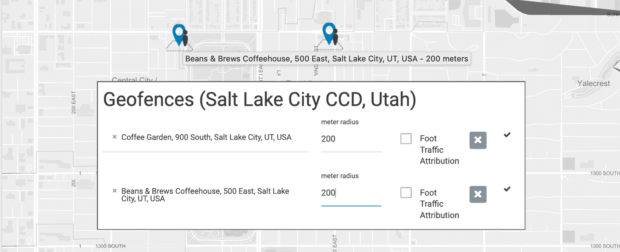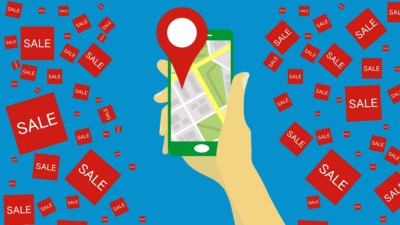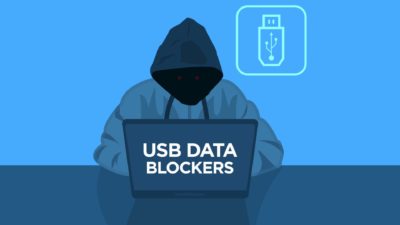GeoCookies might sound delicious, but unfortunately, they aren’t the type of cookies that you can eat. GeoCookies are a sophisticated advertising technology that uses the historical location of smartphones to trigger advertising and other actions. Here’s everything you need to know about both GeoCookies and GeoFencing, how advertisers use these technologies, and their impact on your own personal location privacy.
Your GPS Location Is For Sale
Sometimes, do you feel like your computer and smartphone are spying on you? Actually, in a way, they are. It’s rarely a coincidence that you are exposed to an ad that directly matches your interests.
Your computer’s Internet history is full of data called “cookies” that savvy data scientists and ad networks can use to target your device. Even things like the color and type of a vehicle in a rental car ad can be customized based on the cookie data in your browsing history. Scary right?
Things get even more interesting when it comes to our location privacy and how much our smartphones share our physical location. If you have location services turned on, which most of us do so we can use apps like Google Maps, then the location of your smartphone can be captured in a “GeoFence” and used by advertisers in “GeoFencing” campaigns.
“People should be aware that there’s a cost involved with everything both you and companies do online,” says Josh Keller, Founding Partner at Union Square Media Group and one of Entrepreneur.com’s E-commerce Entrepreneurs To Watch. “As we give up our location information in exchange for free services, we increase the ability of companies to use a wealth of information towards their monetization efforts.”
Keller makes an excellent point. That free game or map app on your phone might not have cost you any money to download, but the company behind it has to recoup their costs somehow. If they aren’t advertising to you, then they might be monetizing something else like your location information.
Wait, What Is Geofencing And How Does It Work?
A Geofence is a virtual boundary around a physical geographical location. These fences are typically a radius around a center point. But in some cases, the fence can be the actual shape of a building that has been drawn on top of a satellite map.
Location-aware devices, like smartphones, can disclose their location while inside a GeoFence via GPS, RFID, WiFi, or cellular data. This location data can then trigger an action, like storing your device ID in a database or anonymously selling your information to an ad exchange. And it is often stored for months or sometimes even years.
How Do You Create A GeoFence?

You do not need to place physical markers or beacons at a location to create a GeoFence. It’s all done online using advertising software. Creating a geofence is as simple as typing in the address of a location that you want to place a GeoFence around.
How Does GeoFencing Work?
So how does GeoFencing work for advertisers? Let’s say that you own a local drive-through coffee shop and you want to advertise to coffee drinkers. But specifically, you only want to advertise to coffee drinkers who frequent other drive-through coffee locations.
How do you advertise to this niche group? You could buy zip code targeted banner ads or even a boosted Facebook post targeted to coffee drinkers. But some of your impressions will be wasted on people who may not own a car, commute to work, or even live in the area.
To better target coffee drinkers in this scenario, you could place GeoFences around other coffee drive-through locations. As soon as someone inside the GeoFence accesses a website or app with any programmatic advertising, their device ID and location will get tagged and logged.
Advertisers can then buy the opportunity to deliver advertisements to that device even after it leaves the GeoFence. This target area can be customized to a country, state, city, or even a neighborhood. For our coffee shop example, a 15-mile radius around your business should work. This way, an advertiser doesn’t have to waste ad impressions on devices that are no longer within the target area.
What Is A GeoCookie?
In the coffee shop advertising scenario above, the advertising campaign was structured around the future location of mobile devices. But what if you want to use the historical location data of mobile devices? For example, let’s say that you want to advertise to mobile phones that have been to drive-through coffee locations in the last several months. That’s a job for GeoCookies.
GeoCookies are the historical location data of a device that may be days, months, or even years old. GeoCookie technology is an excellent tool that can help businesses advertise to people who gathered at a certain location in the past. And GeoCookies are even searchable by date and time. So for example, you could serve different ads to both morning and afternoon coffee drinkers.
#GeoCookies: This Incredible Advertising Technology Can Target The Historical Location Of Smartphones Share on XGeoCookies: Campaign Examples
To maximize the success of your GeoCookie campaign, try to make adding big events, big locations, or lots of little locations part of your advertising strategy. Not every device will get tagged inside a GeoFence and you will need an adequate sampling of devices in order to run a successful advertising campaign. Here are some sample situations that could benefit from a GeoCookies advertising campaign:
- Musical Artists: Promote music sales of your new album to mobile devices that came to see you in concert. GeoCookie data is searchable by date and time. Just use your tour schedule to help filter devices for your GeoCookies campaign.
- Airlines: Promote specific flight routes by advertising to mobile devices that have been in both cities before.
- New Restaurants: Use GeoCookies to find mobile devices that have been to similar restaurants in the past. If you want to just promote lunch, then only use devices that visited your competitors during lunchtime.
- Landscaping Service: People who have visited garden centers probably enjoy having nice landscaped yards. Use historical GeoCookie data from garden center customers and then only advertise to devices in areas with large lawns.
- Craft Fair: Craft fairs have a lot of audience overlap with events like farmer’s markets and art in the parks. Advertise to devices that have attended these events in the past.
Location Privacy Concerns
Tech companies like Amazon, Apple, and Facebook claim that their products are not actually listening in on our conversations. Honestly, they probably don’t need to. These companies know more about us than we realize just by using our location data.
So the next time that you’re planning a spring break vacation and ads for the hotel that you stayed at last year start appearing on your phone, don’t panic. The hotel hasn’t been listening to your phone calls. They are probably just using location data from GeoCookies in an advertising campaign encouraging you to come back for another stay.
As an advertiser, both GeoFencing and GeoCookie technology can be incredibly useful tools. But as an individual, knowing that your location history is being sold anonymously to advertises can be a little frightening.
But here’s a silver lining that might make you feel a little better. Wouldn’t you rather see relevant ads online rather than ads for products and services that you would never use? GeoCookies and GeoFencing offer that relevancy but at a cost.
Here's everything you need to know about Geo Cookies and Geofencing, how advertisers use these technologies and their impact on your personal location privacy ... #Geofencing #GeoCookies #LocationPrivacy #GeoAdvertising Share on XRelated Articles:
- Really Scary Facts About Your Privacy on the Internet
- How To Secure Your Data from WiFi Hacking Attacks
- Jimmy Kimmel Demonstrates How Easy It Is To Social Engineer Passwords
- The Internet’s Most Popular Passwords Revealed After Massive Data Breach

Frank Wilson is a retired teacher with over 30 years of combined experience in the education, small business technology, and real estate business. He now blogs as a hobby and spends most days tinkering with old computers. Wilson is passionate about tech, enjoys fishing, and loves drinking beer.






















 5 Awesome Videos To Watch As You Celebrate National Dog Day
5 Awesome Videos To Watch As You Celebrate National Dog Day
Leave a Reply
You must be logged in to post a comment.